


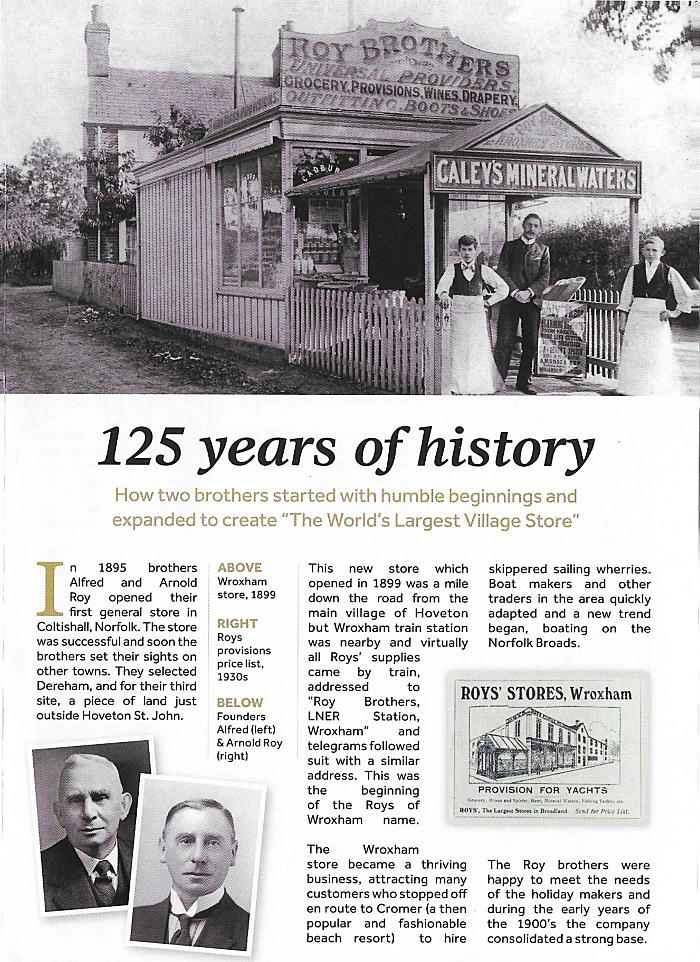
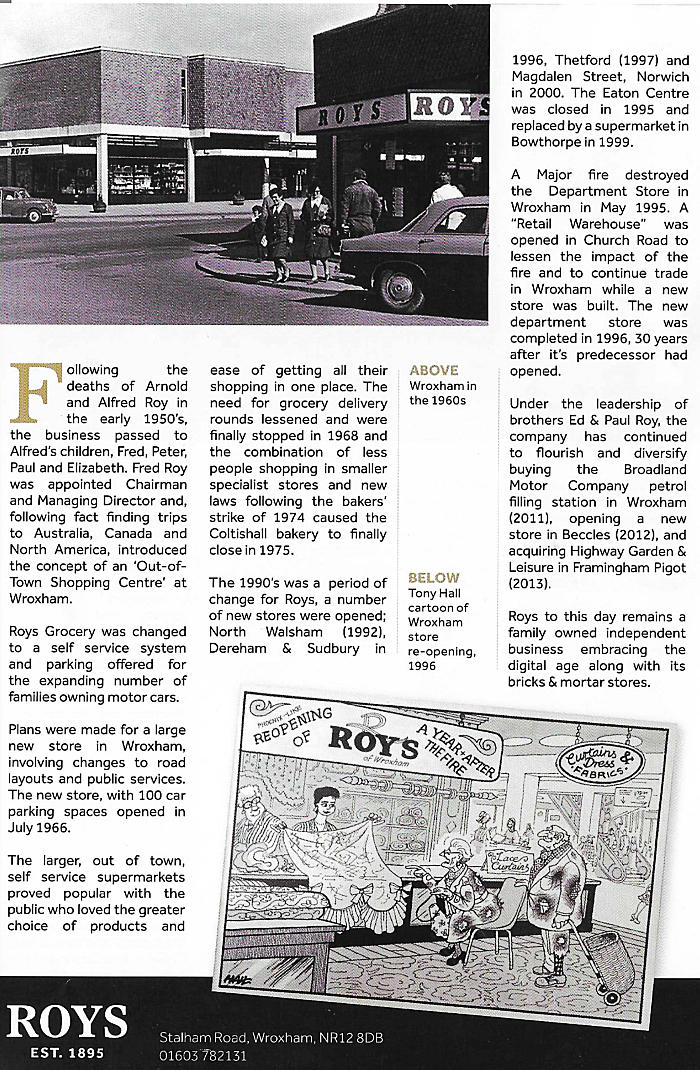
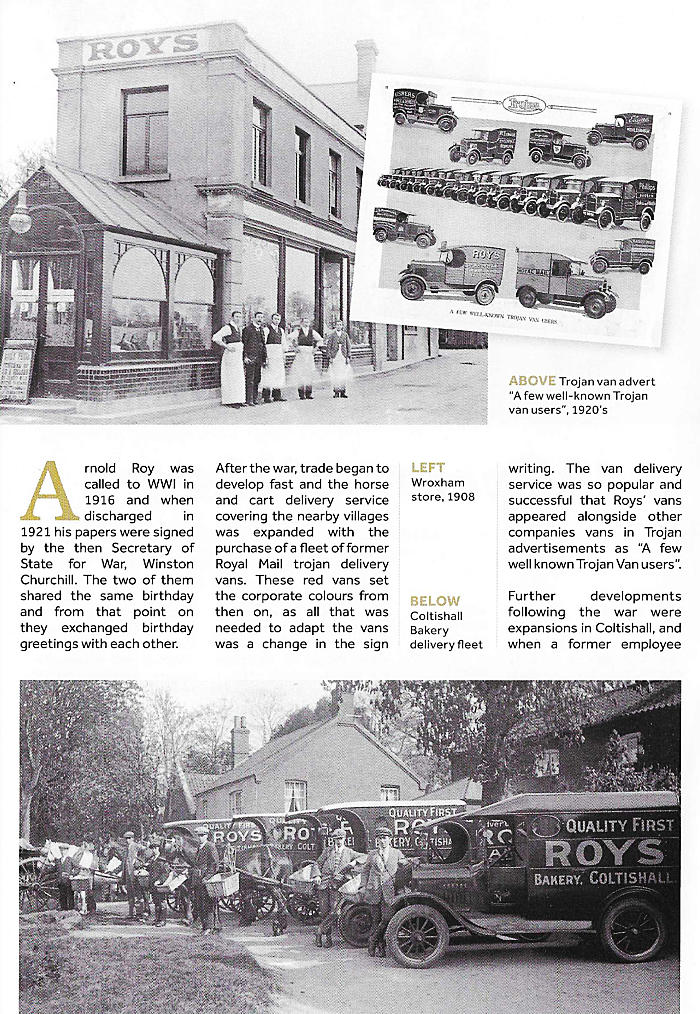
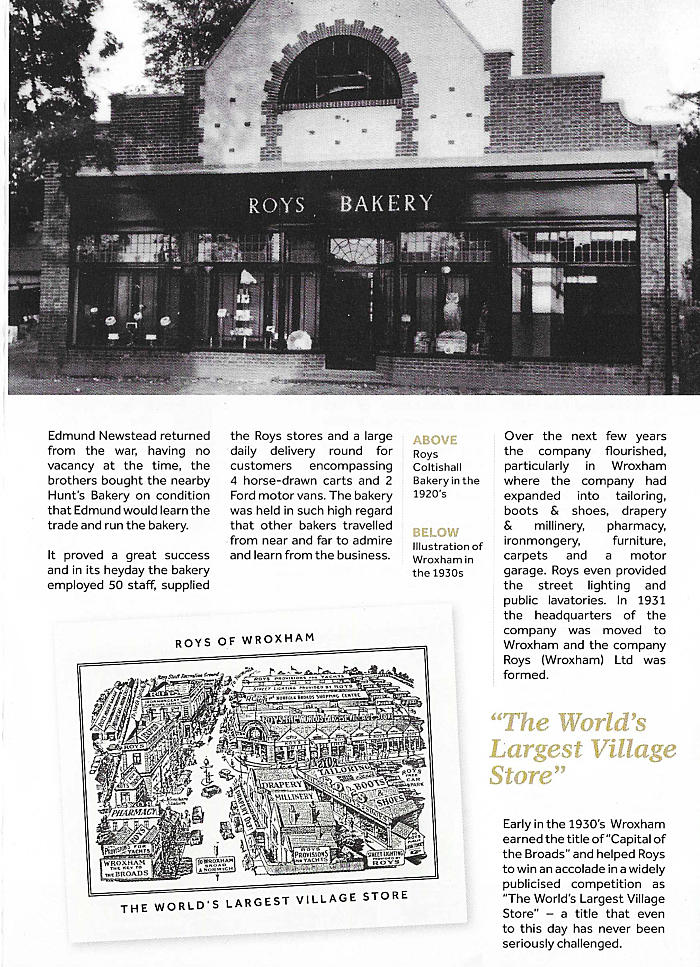


The Norfolk wherry is a type of boat used on The Broads in Norfolk and Suffolk, England. Three main types were developed over
its life, all featuring the distinctive gaff rig with a single, high-peaked sail and the mast stepped well forward.
Development of the Wherry
Wherries were sail and oar craft dating back to at least 1604. These were small craft, in 1727 being of 8 tons net tonnage. They
were still sail and oar boats, fitted with hoops and canvas tilts for the comfort of their passengers. They would have provided a
service carrying passengers and small perishable cargoes. Alongside these early wherries were the bigger keels, which were
transom-sterned clinker-built barges with a square sail on a mast stepped amidships of about 54 feet (16 m) by 14 feet (4.3 m) and
able to carry 30 tons of goods. The keel had been built since the Middle Ages and the design probably went back to the Viking
invasion.
After 1800, the Norfolk Keel (or 'keel wherry') disappeared, partly because a wherry could be sailed with fewer crew, had
limited manoeuvrability and lacked speed.
Types of Wherry
The 'Trading Wherry' developed from the Keel. It is double-ended, its hull painted black
with a white nose to aid visibility after dusk. Most trading wherries were clinker-built, but
Albion, surviving today, was the sole example to be carvel-built. They carry a gaff rig,
the sail historically also black from being treated with a mixture of tar and fish oil to
protect it from the elements. The mast tops and wind vanes were often painted or
shaped (respectively) to identify the wherry's owner - a traditional design is a 'Jenny
Morgan', after a folk song character. Sizes varied, but many of these vessels would
carry around 25 tons of goods. Wherries were able to reach larger boats just off the
coast at Great Yarmouth or Lowestoft and take their cargoes off to be transported inland
through the broads and rivers. The last trading wherry, Ella, was built in 1912.
The 'Pleasure Wherry' evolved as railways
took on the cargo business that had
supported the traders.
Enterprising owners
realised that conversion to carry
passengers was a way to replace the lost
income, especially as the Broads were at the same time being discovered as a
destination for tourism and recreation. Early examples simply featured hammocks and
a stove in the hold of a trader, but boatbuilders soon began to make craft specifically
for pleasure sailing and holidays, using the same hull and rig design but incorporating
living quarters instead of a cargo hold. Some were fitted out to a very high standard
indeed; for example, Hathor, built for the Colman family (of mustard fame), features
highly detailed marquetry in Egyptian designs below decks.
For some holidaymakers, the distinction between
the working boats and pleasure wherries was not
strong enough, and the sleeker and more genteel 'Wherry Yacht' was developed. The main
distinguishing features are a smooth, white yacht-like hull and a large counter-stern providing
a quiet seating area away from the sail winch and any quanting activity.
Wherries came in different sizes, according to the river they used. The North Walsham &
Dilham Canal Wherry was maximum 50 ft (15 m) x 12 ft (3.7 m) x 3' 6". The River Ant Wherry
was 50' x 12' max. The River Bure Wherry was 54' x 12' 8", but for the Aylsham Navigation,
i.e. the upper reaches of the Bure, the boats had to be 12' 6" x 3' 6" maximum.
On the southern Broads, steam wherries were used. The River Waveney Wherry was 70' x 16'
max.
The mast is pivoted with a large counterbalance weight at the bottom.
This enables the
wherry to lower the mast for passing under bridges. The mast can be dropped, the wherry
continues forward under its momentum and the mast is raised again on the far side by the
crew of two. If there is no wind, or the wherry must be turned or otherwise manoeuvred, quant poles are used to provide the
required force.
A special wherry wheelbarrow was used to unload cargo, e.g. stone, from the wherries. It was made from wood and strengthened
with iron bands. It had no legs, therefore it could be rested on the 11-inch-wide (280 mm) planks on the side of the wherry.
Survivors
All types of wherry eventually became uneconomic to run, but a small number have been saved either by private individuals or
charities. Most of the survivors can be seen sailing up and down the rivers and broads today, although some are awaiting full
restoration. Of the eight surviving examples of recreational and commercial sailing wherries, seven are on the National Register of
Historic Ships. An eighth wherry listed on the Register is Jester a motorized ice wherry of 1923.
In April 2011, Wherry Yacht Charter Charitable Trust opened their restored base in Wroxham, where work on the restoration and
maintenance of the Edwardian pleasure wherry Hathor and wherry yachts Norada and Olive can be undertaken in all weathers.
The site located at Barton House was part of a £1.5 million project.
As of Easter 2012, White Moth is also based here. Norada was
officially relaunched after restoration in July 2012, while Olive celebrated similarly in July 2013. The Norfolk Wherry Trust keep
trading wherry Albion at Forsythe Wherry Yard, off Womack Water at Ludham; trading wherry Maud also berths here in the winter.
Solace can usually be seen on Wroxham Broad in the sailing season, while Ardea is often seen at Southgates yard in Horning.


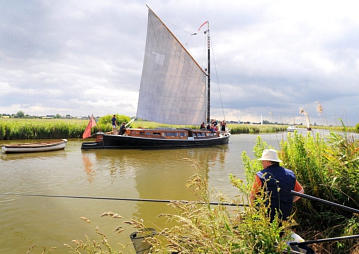
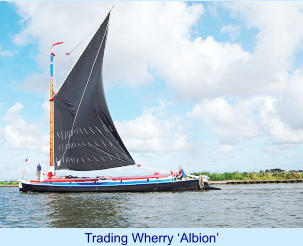
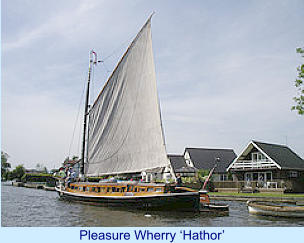
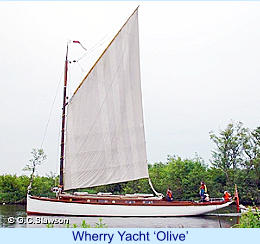
A Guided Tour of Norfolk Wherry ‘Maud’
Wherries were Broads barges, designed to catch the smallest amount of wind and to navigate the
shallow twisting rivers of the Broads. The nearest they got to the sea was Gt. Yarmouth and Lowestoft.
In late Victorian times some were built as wherry yachts - same basic boat but fitted out for carrying
owner and friends in luxury instead of cargo.
Normal crew on the cargo wherries was one man and a ‘boy’ or trainee, sufficient to lower and raise the
mast which is so finely balanced that the ‘boy’ could do it although when passing from the northern to
southern Broads at Gt Yarmouth with its multiple bridges and difficult tides, an extra hand would
sometimes join for that short passage.
‘Shooting‘ these bridges without engine power and the sail lowered required fine judgement and the
use of the tides.
No engine, even now. The mast is high enough to pick up winds above the tree line, but if the wind
dropped entirely the ‘boy’ would get a pole out and walk it down the length of the boat to push the
wherry through the waters - this is called quanting and several shots of Maud under way show her 2
quant poles projecting either side of her bow.
Those that were not scrapped in the 1950s were sunk in mud in quiet areas of the Broads where the oak timbers were mostly
preserved. A few have been recovered and restored, requiring a lot of years and much funding.
Built in 1899, Maud was a working wherry carrying timber from the coast to the sawmills at Norwich. Sunk on Ranworth Broad during
the 1960’s, she has since been restored, after 18 years of painstaking work, to her former glory.
A guided tour of Maud, filmed in September 2020, can be viewed here: https://youtu.be/YNbHZX-DMTA
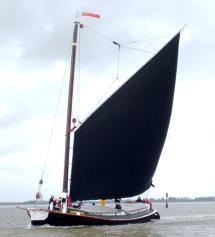


The Norfolk & Suffolk Boating Association (NSBA) is an association representing private users of pleasure craft
in Norfolk & Suffolk. The NSBA Greenbooks, published annually, are an invaluable onboard reference for all
Broads users. In addition to being the long-established finite source of centralised information on each Broads
Sailing Year, (containing all Club Events and Class information and Boat Lists), they are also a mine of
information for anyone wishing to navigate the area, whether by Sail or Power.
For more information visit their website - click here


Merchant Navy Association
Boat Club


Page 5 of 6
FEATURED ARTICLES



